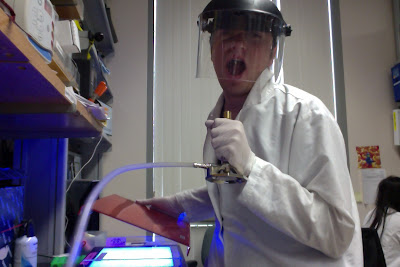Hey guys! I hope everyone is having an exhilarating summer
both inside and outside of the lab. I’ve been working hard in the Hill Lab
specifically with this social motility assay we like to call “SoMo.” I briefly
explained it in my last blog and even showed a picture, but basically it’s a
behavioral assay that tests the capacity for a trypanosomal cell line to engage
in social motility. Because this is a new technique employed in the lab, we’re
still working on optimizing the protocol. I’ve been the only
researcher in our lab using this technique extensively as a way to answer my
research question. For this reason, the graduate students, post-docs, and even
my P.I. have oftentimes asked me for my input in terms of what I think works
best. This is a great feeling because it underscores the importance of my
contribution to the lab; it also reminds me that I am at the front lines of
cutting-edge research. Other labs across the world including Switzerland are
using this novel technique, so I assume it’s my responsibility to obtain robust
and reproducible results!
Anyway, enough of that. I’ve also been cloning in the
carbonic anhydrase gene into a construct which contains an HA epitope. After my
sequencing results improve (argh), I will soon be transfecting the parasites
with the epitope-tagged construct and performing immunofluorescence to
determine the localization of carbonic anhydrase.
Here’s me cloning.
So what you’re seeing here are a bunch of flasks containing
different parasitic cell lines.
“IS THAT BLOOD?” one may ask
………
The answer is…….no! I wish, how cool would that be?


No comments:
Post a Comment